All the parents have the same obsession, they must let their children brush their teeth well, have healthy teeth that are white and clean, and smile with confidence like a tooth model!
However the ideal is full, but reality is bony.
Tooth decay, scientifically known as dental caries, is the most common health problem in almost every age group. It is the most common type of disease in the [Global Burden of Disease Study] published by The Lancet in 2015.
Although a new generation of parents started to pay attention to their children’s oral health early, most kindergarteners have bad teeth as black as George’s dinosaur’s.
The survey shows that the prevalence of caries in deciduous teeth of 5-year-old children is 70.9%⚡️, an increase of 5.8% from a decade ago. The prevalence of caries in 12-year-old children’s permanent teeth is 34.5%⚡️, an increase of 7.8% from a decade ago.
In other words, the problem of dental caries in children is also very common, and it is showing an unstoppable upward trend. Among 5-year-old children, 7 out of 10 babies are the norm, and many babies have more than one broken deciduous tooth.
Brushing your teeth well is a healthy habit that children will benefit from for a lifetime, but letting children brush their teeth well is a very annoying and “anti-nature” thing. It requires the patience and company of parents, and it also affects the safety, cleaning efficiency, comfort, and safety of children’s toothbrushes. Designs such as noise and fun put forward higher requirements – much higher than the requirements of adult toothbrushes.
Today we are going to talk about how to choose a child-friendly toothbrush. There are many “counter-examples” of manual and electric toothbrushes in the article.
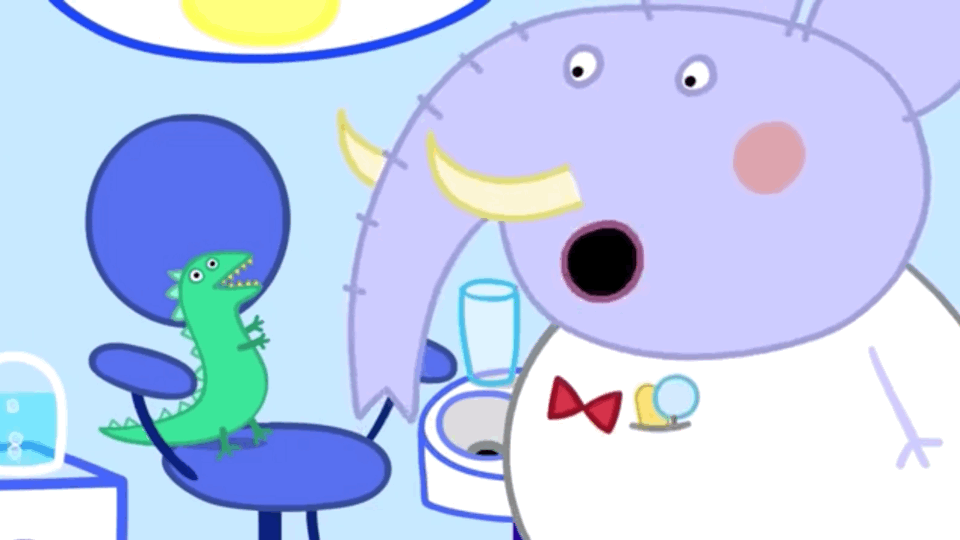
Are electric toothbrushes really great?
Many people think that “manual toothbrushes can also clean teeth, electric toothbrushes are not so magical”, this opinion is half right.
In short, if you master the correct brushing method, have enough patience, and use the right toothpaste, you can really brush your teeth well with a manual toothbrush.
However, good brushing skills and patience can be quite a challenge in themselves for parents brushing their children’s teeth.
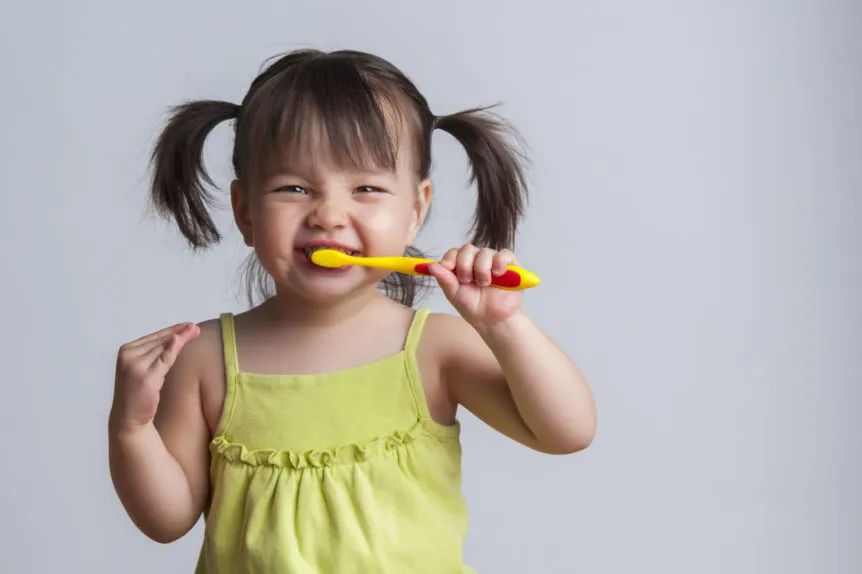
The electric toothbrush is an example of technology changing life, which can help us and our children brush more efficiently and safely, and the protection of teeth may be more advantageous:
Less reliant on brushing method, electric toothbrush is more “lazy friendly”, it can perform hundreds of times the speed of a manual toothbrush, make brushing more efficient and achieve good cleaning effect with relatively softer bristles.
Electric toothbrush selection guide
Compared with manual toothbrushes, electric toothbrushes are easier to help me clean my teeth, but not every electric toothbrush is a well-designed toothbrush. We need to focus on the following four points.
-
Choose a toothbrush with strong cleaning ability
Isn’t this surprising? Isn’t the original intention of the electric toothbrush to brush your teeth more cleanly? Is there any electric toothbrush with a weak cleaning ability?
Yes, It does!
At present, there is no corresponding standard to stipulate the cleaning effect of electric toothbrushes, which leads to the emergence of many electric toothbrush products on the market that have weak cleaning ability, and are even far less powerful than manual toothbrushes.
The essence of brushing is to remove plaque that can cause tooth decay. In order to “decontaminate”, we need to stick the toothbrush bristles close to the teeth, peel a distance along the surface of the teeth, and finally, with the help of toothpaste, take away the peeled plaque and food residues with water.
Specifically, the following three conditions need to be met at the same time:
?
How to brush away plaque?
?
1). The bristles must have a certain hardness (but not too hard) and must effectively contact the tooth surface;
2). The bristles must follow the tooth surface (straight line or/and turn/curve);
3). The movement can reach a certain distance before it can be peeled off (this is because the plaque has a certain elasticity, and experiments have shown that it takes at least about 0.3 to 0.5mm to peel off the plaque.
Based on this, there are only two types of electric toothbrushes with excellent cleaning power that have been proven in the market for many years:
Mechanical Rotary:

And a sonic electric toothbrush:

Let’s take some counter-examples of toothbrushes that are not strong enough to clean.
- Eccentric Sonic Toothbrush
Among the sonic electric toothbrushes on the market,
there is a type of eccentric sonic toothbrush, pay attention to its trajectory:
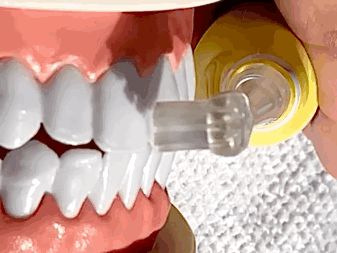
Did you notice that its bristles don’t move in the direction of “close to the tooth surface”, but jump up and down.
It uses a micro-motor to drive the eccentric wheel to vibrate, which is very different from the structure of a real sonic electric toothbrush.
The result is that the cleaning power is weak and cannot meet the necessary conditions for plaque removal (point 3), so it is best not to choose it.

❌Eccentric
- U-shaped toothbrush
In recent years, there is also a kind of very popular U-shaped toothbrush with braces, which is a black technology that cleans all teeth in 5 seconds. “360° package, no dead ends when brushing teeth, children can operate by themselves”, for parents who have difficulty brushing their teeth at home. It is hard not to be moved by such “black technology”. No matter the usage or the shape, children will probably like it, there are manual models and electric models.
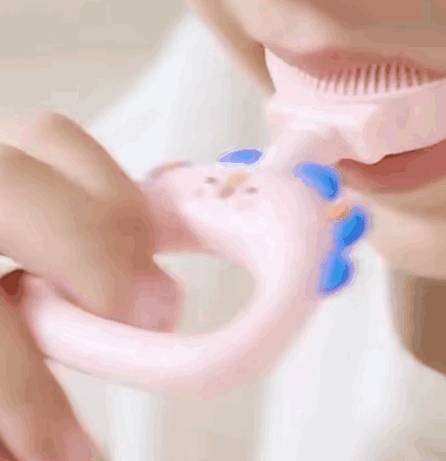

It’s true that it won’t hurt your mouth, but it’s false that you can brush your teeth clean.
The second is the poor fit. Everyone’s oral structure is unique, just like we need custom molds when we straighten teeth, it is impossible for a brace to fit different teeth and fit each child’s tooth surface, but the shape of the brush head of the U-shaped toothbrush is different. It is fixed.
In addition, most of its bristles are made of soft silicone material. As a toothbrush, the bristles are not clean enough to effectively remove plaque.
By the way, have you ever wondered why this toothbrush usually comes with mousse toothpaste? Because the paste toothbrush can hardly be melted, you can see how weak its cleaning power is.
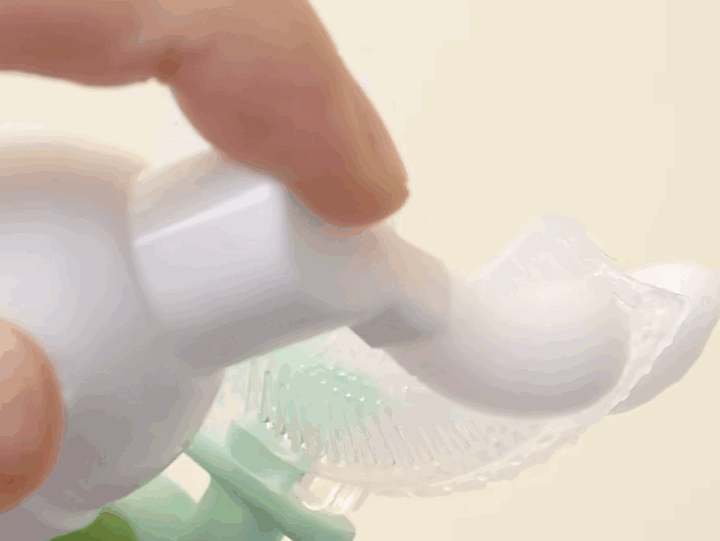
In addition, the bristles are so thick, and the bristles are in contact with the teeth at almost 90 degrees, so it is even more difficult to think about going deep between the teeth and the gums.
-
Choose a toothbrush with high safety and less tooth collision
Children’s mouths are very tender, and safety is the most important consideration for children’s toothbrushes.
From a general point of view, in addition to paying attention to the sharp edges and corners of the toothbrush, electric shock risk, material poisoning, noise level and other issues (some small brands may have safety risks), but for the things that children want to enter, there are several safety issues that need to be emphasized:
1). Do the bristles tend to wear down the teeth and damage the soft tissue with prolonged use?
2). Does the movement of the brush head frequently strike the teeth or soft tissue?
3). Are there any dead spots to clean?
Based on this, let’s talk about the advantages and disadvantages of mainstream electric toothbrushes.
Mechanical rotary electric toothbrushes
Mechanical rotary electric toothbrushes are a widely recommended category, first invented, and cleaning results are excellent. But its downsides are also obvious—it’s loud, feels like a high-speed drill in your mouth, and may make your child repulse from brushing.
Another point is that the bristles are hard.
Because of the complex mechanical structure, the plastic part of the toothbrush head is usually thick, and the length of the toothbrush bristles is shorter than that of a normal toothbrush. The bristles are short, which means a firmer feel.
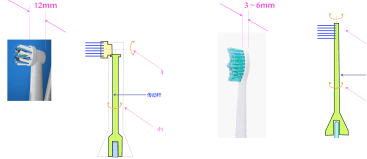
Brushing with hard bristles is more likely to cause bleeding and even excessive wear on the surface of the teeth, so we need to pay special attention to whether the friction of the bristles is too high.
In addition, many mechanical electric toothbrushes have a hollowed-out hole in the middle, which is a dead corner for cleaning, and it is easy to enter water and breed bacteria, which may pose certain health risks.
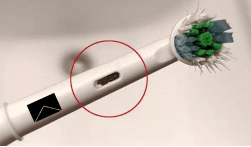
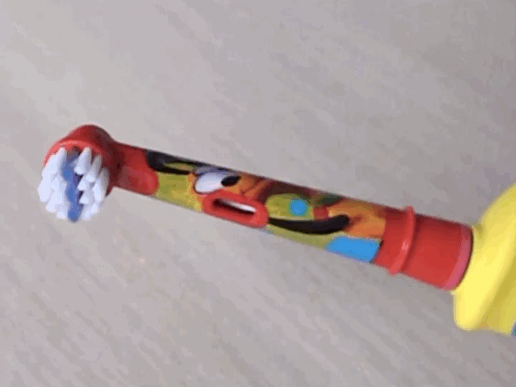
△A big name mechanical electric toothbrush
Sonic toothbrushes
Sonic toothbrushes are a latecomer. Its principle is to use the sonic motor to swing the toothbrush back and forth, and the cleaning ability is also excellent, but the noise is small.
Because the mechanical structure is simpler, its brush head can be made very thin, and the bristles are of normal length and not hard. These are the advantages of sonic toothbrushes.
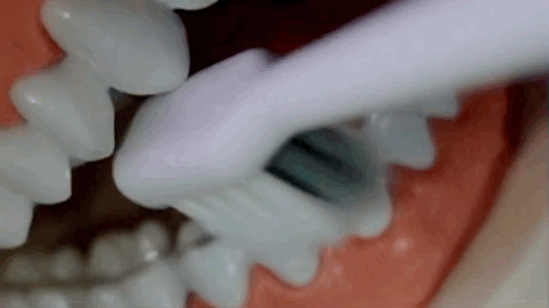
But it also has a big disadvantage: the high-speed swinging toothbrush head can easily hit the teeth, tongue, lips, and the soft tissues of the mouth such as the gums.
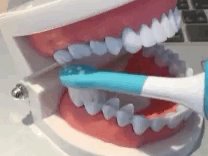
△Even if soft rubber is added to the brush head for shock absorption, it still can’t solve the issue.
Many people feel that electric toothbrushes are “very uncomfortable”, sore and numb, and even worry about whether they will hurt their teeth.
In fact, mechanical electric toothbrushes may also bump teeth, which is a matter of principle.
Regardless of the brand or model, the vast majority of sonic toothbrushes at present cannot solve this problem, which is a possible health hazard. The advice from most brands is to get used to it with multiple uses, or to use it with care to avoid the brush head coming into contact with teeth or soft tissue.
Therefore, if the child feels uncomfortable that it is easy to hit the teeth, we should choose the taller one from the short ones, choose an electric toothbrush with less impact on the teeth and soft tissues, or brush with a traditional manual toothbrush.
All in all, both mechanical rotary and traditional sonic electric toothbrushes have good cleaning power, but most of them are not perfect, and have some disadvantages of “uncomfortable to use”, which is also the reason why many children do not like to use electric toothbrushes and are difficult to adhere to.
No matter the brand or model, electric or manual, choose the one that suits you and your child, and the one you are willing to stick to is the best choice.
-
Choose a toothbrush with moderately soft and hard bristles
Let’s start with a soft-bristled toothbrush. For example, the 10,000 bristles children’s toothbrush with super soft bristles and gentle gum care, have you ever bought it?
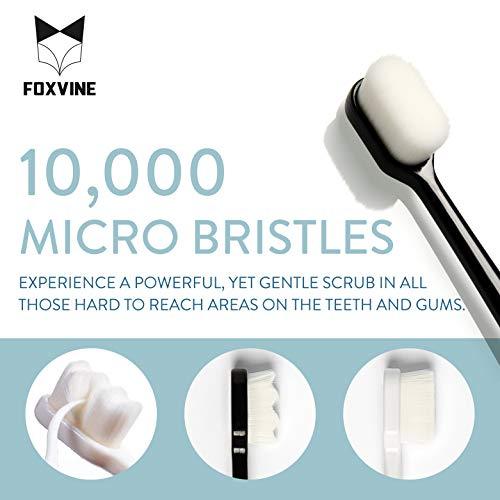
The problem with it is that the bristles are so soft that they fall off when touched, not only can’t brush away the plaque, but also fry after a few uses.
But the bristles should not be too hard. The worst way to brush your teeth is to use a hard-bristled toothbrush.
It is a fact that as long as you brush your teeth, you wear down your teeth to some extent. Although there is a hard protective layer on the surface of the teeth, the iron rod can also be ground into a needle. Over time, excessive force is likely to cause excessive wear of the teeth, and the more serious case is a wedge-shaped loss.
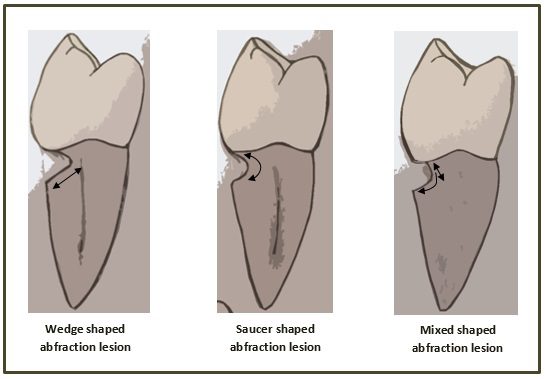
Remember to use a toothbrush with moderate hardness and gentle brushing.
The rounding rate of the bristles also determines its wear capacity. The rounding rate refers to the roundness of the top of the bristles. The electric toothbrush testing standard stipulates that the rounding rate of adult electric toothbrushes shall not be lower than 50%, and that of children’s electric toothbrushes shall not be lower than 70%.
The bristles that are not ideally rounded are sharp and uneven, which will damage the teeth to a greater extent when brushing, just like grinding tofu with sandpaper, the damage to the teeth is accumulated over time.
Try to choose a big brand of toothbrush product, choose moderately soft and hard bristles, brush your teeth gently with the correct method, and brush enough time, so as to find a balance between cleaning your mouth and protecting your teeth.
-
Choose a toothbrush that helps your child develop a brushing habit
The survey shows that the rate of 5-year-old children brushing their teeth twice a day is 24.1%, which is too low and too low.
Many toothbrush designs are not user-friendly, such as loud noise, hard bristles, easy to hit teeth, etc., which makes children who do not like brushing their teeth even more reject it.
On the other hand, in order to attract children to brush their teeth seriously, many brands have also made various attempts, such as making toothbrushes like toys, turning brushing into games with mobile phones, and introducing popular IP for children. For some children, short-term It looks really useful. But for children to voluntarily do a “correct but not interesting” thing, just relying on games is definitely not enough. It is difficult for children to be attracted by a simple game for a long time, and parents need more persistence and guidance.
As a product, this puts forward higher requirements for design, such as adding reward mechanisms, lighting reminders, etc., to help children develop long-term healthy habits.
Dental care knowledge other than brushing
Brushing your teeth is the most important thing in your daily dental care, but it’s not everything.
The purpose of oral care is to prevent tooth decay by removing as much plaque and food debris from the teeth as possible.

However, there is currently no toothbrush that can clean the teeth and the gaps between the teeth well. So we not only need to guide children to brush their teeth, but also need to use dental floss correctly to help children clean their teeth.
Note that water flossing should only be used in addition to flossing, not as a replacement.
In addition, every once in a while, we should go to the dentist to clean our teeth, check our teeth, and do other cleanings to remedy the calculus, tooth decay, or other periodontal diseases caused by poor dental care.

Rational use of fluoride toothpaste and regular fluoride application by a dentist can also help to mineralize teeth and improve children’s ability to prevent tooth decay.
For some children, it is difficult to clean the pits and fissures on the top of the big teeth even if you brush your teeth carefully. Sealing the pits and fissures can greatly reduce the risk of tooth decay in the pits and fissures.
After the child is a little older (generally recommended to be six years old), choosing the right mouthwash can also improve the effect of tooth care. But be sure to keep your eyes open, avoid unsuitable products, and don’t be superstitious about mouthwash products that can have an “extremely long standby”. Mouthwashes can only inhibit the growth of dental plaque in a short period of time.
???
I hope all children can have healthy teeth! ~

